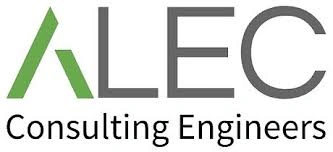
For years, 3D BIM (Building Information Modelling) has been the foundation of digital construction. It gave the industry the ability to visualise structures, identify clashes, and coordinate design with better accuracy. But as technology evolves and projects become more complex, the AEC industry is looking beyond 3D.
Welcome to the era of multidimensional modelling — where BIM extends into 4D, 5D, 6D, and beyond, linking data, time, cost, and performance throughout a building’s entire lifecycle.
From 3D to 4D, 5D, and 6D – What Do the Extra Dimensions Mean?
Each new BIM dimension adds a layer of intelligence to the model, turning it from a visual tool into a dynamic information system that drives smarter decision-making.
4D BIM – Time
4D BIM connects the 3D model with the construction schedule. This creates a time-based simulation that allows teams to visualise how a project will be built, step by step.
By integrating the program with the model:
- Sequencing clashes can be identified early.
- Stakeholders can see construction progress before it happens.
- Site logistics and safety can be better planned.
At Draftech, 4D modelling is often the first “aha” moment for clients — seeing how BIM drives real-world efficiency on-site.
5D BIM – Cost
5D adds cost data to the model. Materials, quantities, and assemblies are linked to pricing structures, providing live cost feedback as design changes occur.
This means project teams can:
- Instantly understand the cost impact of design choices.
- Create more accurate estimates and tender submissions.
- Control budgets more effectively throughout delivery.
In short, 5D BIM brings transparency to one of the biggest challenges in construction — cost control.
6D BIM – Sustainability and Lifecycle Data
6D expands BIM into the realm of sustainability, operations, and lifecycle management.
This model layer includes energy performance, material lifecycle data, and maintenance requirements, enabling asset owners to plan for the long term.
6D BIM is the foundation for Digital Twins — living, data-rich models that mirror the real building in real time.
Digital Twins – The Next Step in Lifecycle Modelling
A Digital Twin is a continuously updated digital replica of a physical asset, used to monitor, simulate, and optimise performance.
By integrating IoT data, sensors, and asset management systems, a digital twin allows building operators to:
- Track real-time energy use and equipment performance.
- Predict maintenance needs before issues occur.
- Extend the asset’s lifecycle through data-driven insights.
For owners and facility managers, digital twins bridge the gap between design, construction, and operations, creating a continuous digital thread across the entire asset lifecycle.
The Power of Integration
The true potential of multidimensional BIM lies in integration.
When 4D (time), 5D (cost), and 6D (operation and sustainability) are connected within one intelligent model, project teams can:
- Make better decisions earlier.
- Minimise risk and rework.
- Delivering assets that perform better, cost less, and last longer.
At Draftech, our focus is on helping clients move from static 3D models to data-rich, multidimensional environments — where every stakeholder benefits from transparency, collaboration, and insight.
Where to Next?
As BIM continues to evolve, the focus is shifting from design coordination to total lifecycle intelligence.
The question is no longer if you should integrate multidimensional BIM — it’s how soon you can start.
Because in today’s construction landscape, those who leverage 4D, 5D, 6D, and digital twins aren’t just building projects — they’re building the future.
Draftech – Your Project, Our Expertise
Testimonials
Thank you for all your efforts on our projects; they have been an invaluable contribution to their success. We look forward to working with you on future projects.
Ian Ferguson MPM Group
Jess and Karl at Draftech were amazing. The communication from the start was prompt, and the entire process was extremely easy. We needed their knowledge on Air Schematics, and they had made one up for our buildings that we service. Thanks so much, and we will be using you guys in the future. Cheers, Air Control Australia.
Greg Colebrook AirControl Australia
With Draftech’s thorough understanding of building services modelling and close attention to detail, Forth has been afforded the opportunity to outsource some of our BIM projects with absolute confidence in the accuracy of the final product.
Gary Murdoch Forth Consulting
Very professional and efficient organization. Delivered a great product to a tight deadline.
ACE Power
Karl and the team are very professional and have a vast knowledge of BIM coordination.
Dwayne Willaims Babinda Electrics
We had multiple large projects with tight deadlines and needed a company we could trust. The teams delivery, attention to detail and understanding of what is being designed is always executed to a high standard.
Martin O’Donovan Envar Engineers
Draftech offered a flexible and reliable approach to working collaboratively with our team. They met our expectations and quality requirements and also offered up new ideas.
Draftech have proven to be a valuable and trustworthy resource and we will continue to work with Draftech on other projects.
Simon Marsden Umow Lai
Draftech is different from others in the professionalism and features they provide.
The ability to walk through projects in real time online provides invaluable insight into problem areas and helps provide an efficient resolution on the spot without many phone calls, emails and the necessity for us to paw through countless drawings to understand the issues.
Todd Morris Manager - Air mech
Draftech were put forward to FIP Electrical as the solution to Coordinate, Model, carry out clash detection, provide Electrical Services Shop Drawings, as built documentation and completed electrical model.
Simon Thorpe FIP Electrical
In close collaboration Draftech set up all our systems and model deliverables. In this process Draftech have proven to be a valuable resource for us and demonstrated commitment, understanding and professionalism.
David Skelley DJCoalition
Draftech’s attention to detail and proactive nature throughout the project assisted us in identifying issues before becoming evident on site, saving us both time and unexpected costs.
Matt Payne PJM Engineering Services
They delivered very high quality Revit models and associated 2D documentation at key milestones, working to a tight budget and in strict accordance with the Architects’ BIM requirements.
Peter Thomas Geoff Hesford
We found Draftech’s work to be of high standard and the team delivered exactly as agreed, in fact, when we considered the project complete, Draftech put further resources into the project as they were not satisfied.
John Johnson Beca
Engaging Draftech during design gave us the tools to make smart decisions.
Hansen Yuncken Design Manager - Michael Harkins
The drafting service is timely, reliable and fit for purpose for the built environment.
Peter Harvey Harvey Industries
Draftech stands apart from other drafting services that we have previously used in their attention to detail and ability to adapt to the individual client’s requirements.
Doug Holt McCaig Aircon
I can confidently recommend Draftech as a solid and reliable supplier, and experts in their field. I look forward to working with them again in the near future.
Chris Behan Norman Disney & Young
After seeing the benefits Draftech provided us on the Townsville Hospital Redevelopment we have set up a relationship with Draftech and intend to continue to use their BIM knowledge and skills for our future projects.
Brad Lund Energy Power Systems
Draftech has no competition as they are in a class of their own.
John Boyes Babinda Electrics
Draftech Developments Drafting and Design Capabilities, in conjunction with their outstanding level of Client service and support has provided great solutions to our engineering and Drafting Design portions within our Gorgon Barrow Island Project.
Aaron Hazelton Applied Electro Systems Pty Ltd
Draftech set up necessary systems and workflows very quickly, but also setup auditable estimating and weekly cost tracking processes that we utilised, requiring little maintenance.
TOM PURDON MPM GROUP
































